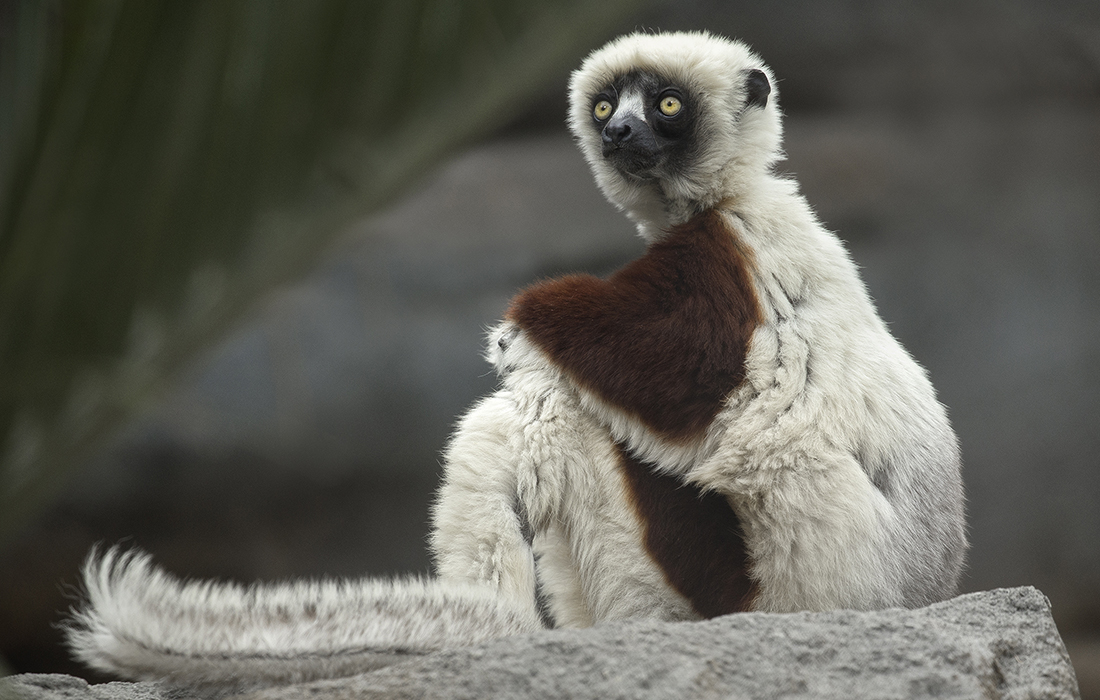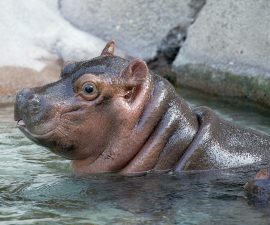BY Donna Parham
Photography by Tammy Spratt
The Zoo’s Conrad Prebys Africa Rocks is home to five different lemur species, which makes for lively times in the exhibit treetops. One of these remarkable species is the Coquerel’s sifaka (pronounced shi-FAHK), which is native to the forests of Madagascar. The name comes from the distinct call this animal makes as it travels through the trees, which sounds like “shif-auk.” This graceful, leaf-eating prosimian is one of the standout species that make a journey through Africa Rocks so memorable.
BUST A MOVE
All lemurs can climb trees, but there are two main ways of getting around in the treetops. Some make their way by agilely walking, running, and leaping quadrupedally (on all fours). This method of locomotion is typical of many species, including the familiar ring-tailed lemur. Other lemur species—including sifakas—are described as “vertical clingers and leapers,” because of the way they move from trunk to trunk with explosive leaps. Clinging to a vertical branch or trunk, a sifaka hurls itself into the air—backward and holding its body upright—propelled by its powerful legs. Mid-jump, it twists 180 degrees to adjust position, so that it lands facing forward, feet-first, on another vertical support. Some sifakas can rocket as far as 40 feet across open spans high in the forest.
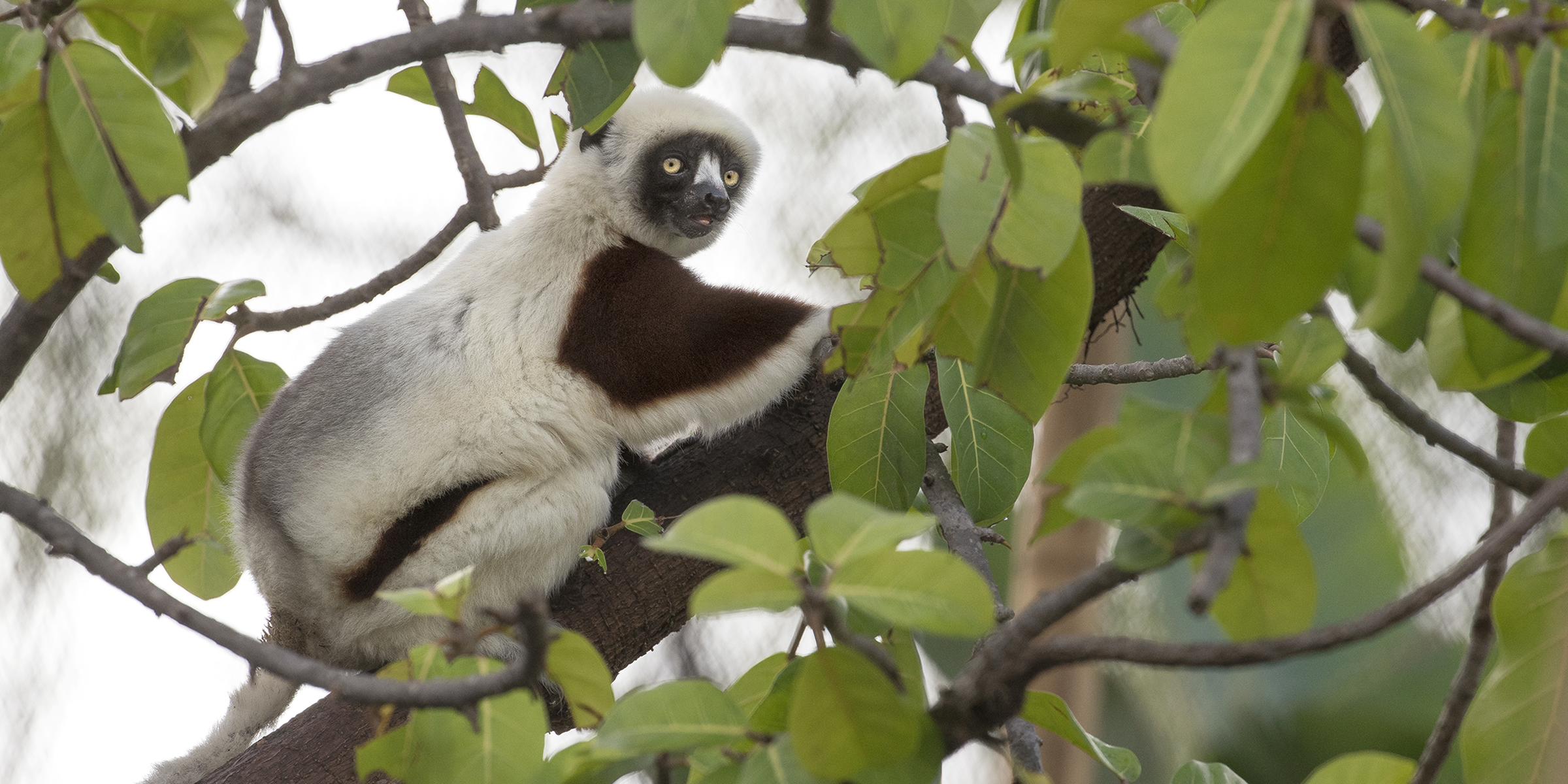
A PRETTY PAIR
Early in the morning, Africa Rocks visitors may spy a pair of Coquerel’s sifakas Propithecus coquereli high in the trees, soaking up the warmth of the sun. Sporting large brown patches on an otherwise cream-colored coat, the Coquerel’s sifaka is undeniably one of the loveliest lemurs. And while the vivid pattern stands out against a solid-color background, it can also help these tree dwellers blend into the forest as sunlight flickers through the leaves. When the unusual primates aren’t launching themselves around the exhibit, they make themselves comfortable by wrapping their hands and feet around a vertical branch or tree trunk, with bent knees held to their chest.
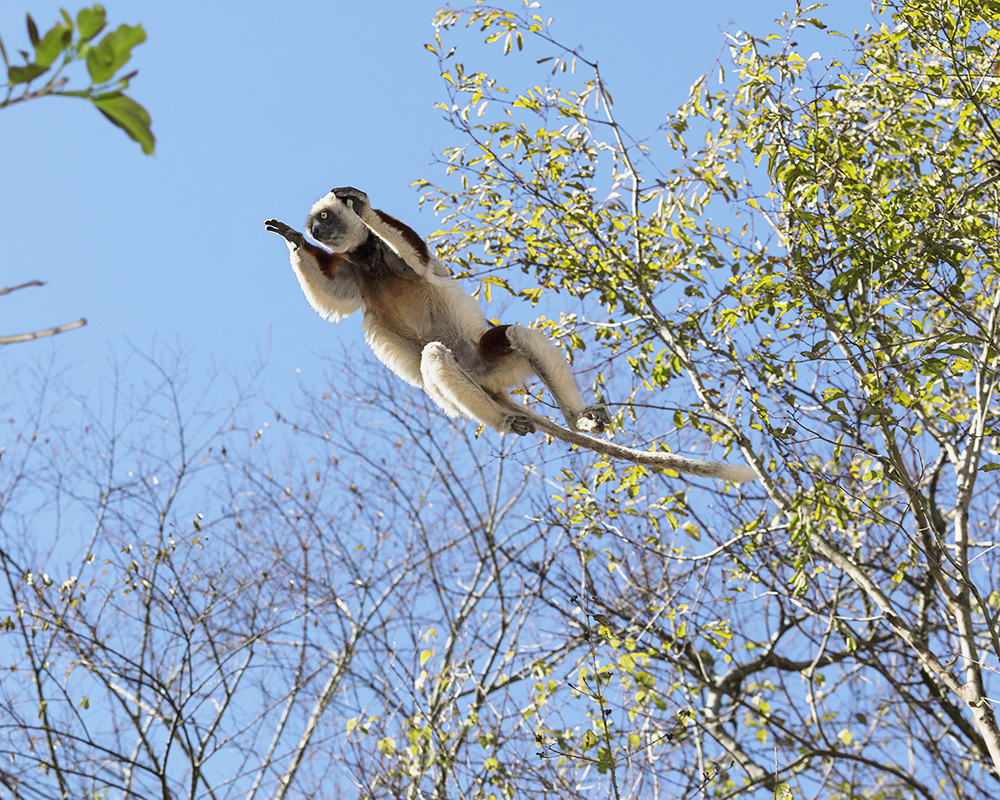
WATCH OUT BELOW!
Sifakas are adept at jumping, clinging, leaping, and hopping. (Photo by Konrad Wothe/Minden Pictures)
By late morning, “They’ll be bouncing from post to post,” says Christian Deane, keeper. He points out the vertical supports that have been installed in their habitat to encourage the sifakas’ vertical clinging-and-leaping locomotion. Although he has worked with other primates for more than a decade, the sifakas’ arrival at Africa Rocks marks his first experience caring for this particular prosimian. “I can’t tell you how excited I was when I learned that I was assigned to work with them. We don’t see them in too many zoos around the country, so it’s pretty special to have a breeding pair here.” he says. “They are sweethearts—very good-natured animals.”
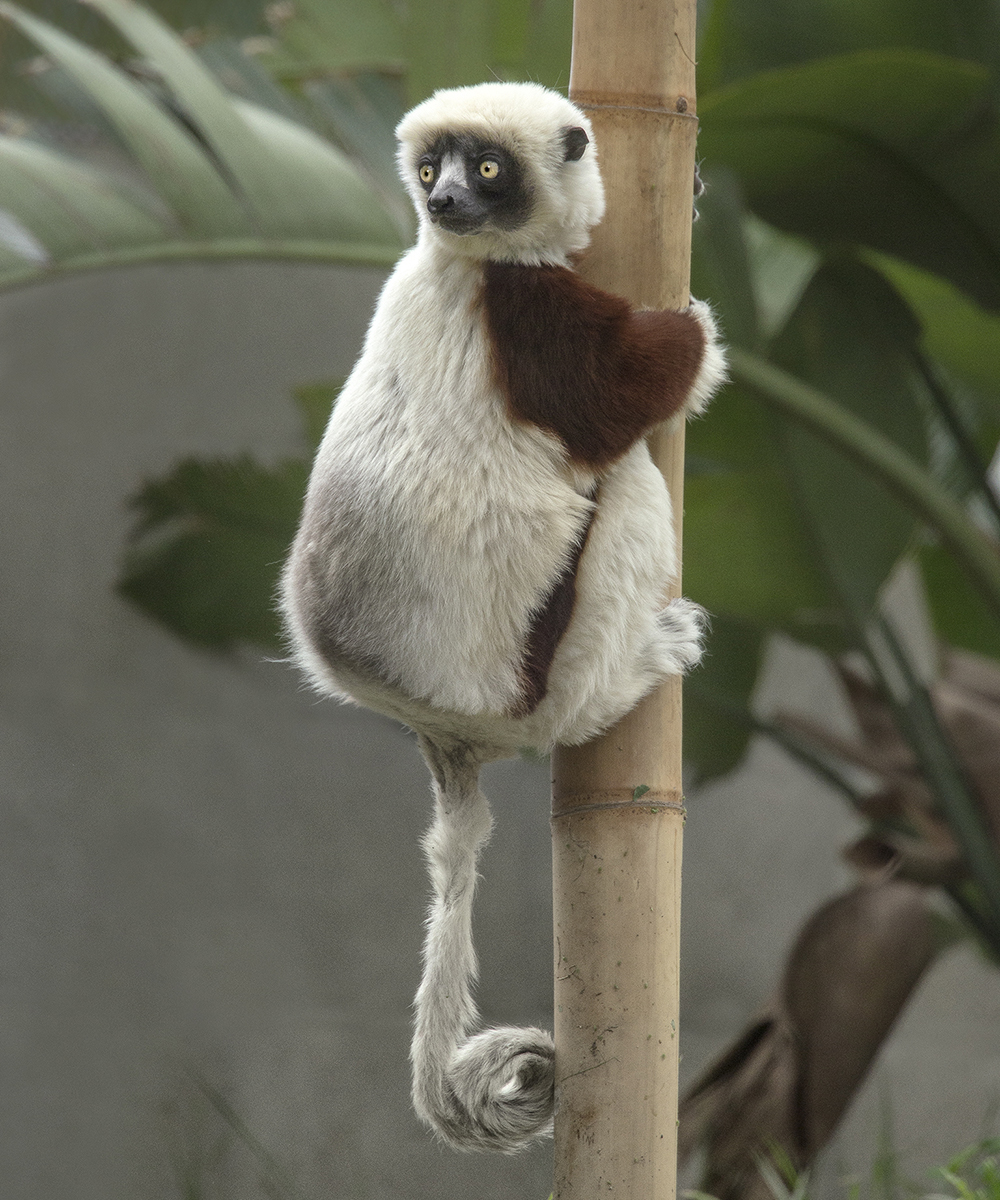
QUITE COMFORTABLE, THANK YOU
Knees tucked to chest, a resting sifaka clings to a vertical support. Sifakas are the only lemurs that curl their tails.
DO THE LOCOMOTION
The Zoo’s Coquerel’s sifakas “already have a huge fan base,” says Christian. And if visitors are astounded to see the sifakas bounding among the trees, they are also charmed to see the animals scamper on the ground. Typically, sifakas don’t spend a lot of time traveling on the ground, but when they do, their mode of locomotion is an unmistakable—and comical—move sometimes called the “sifaka dance.” Holding its body upright, and extending its arms for balance, a sifaka spryly hops bipedally (on two legs). Propelled by its powerful legs, it covers several feet with each bouncing hop.
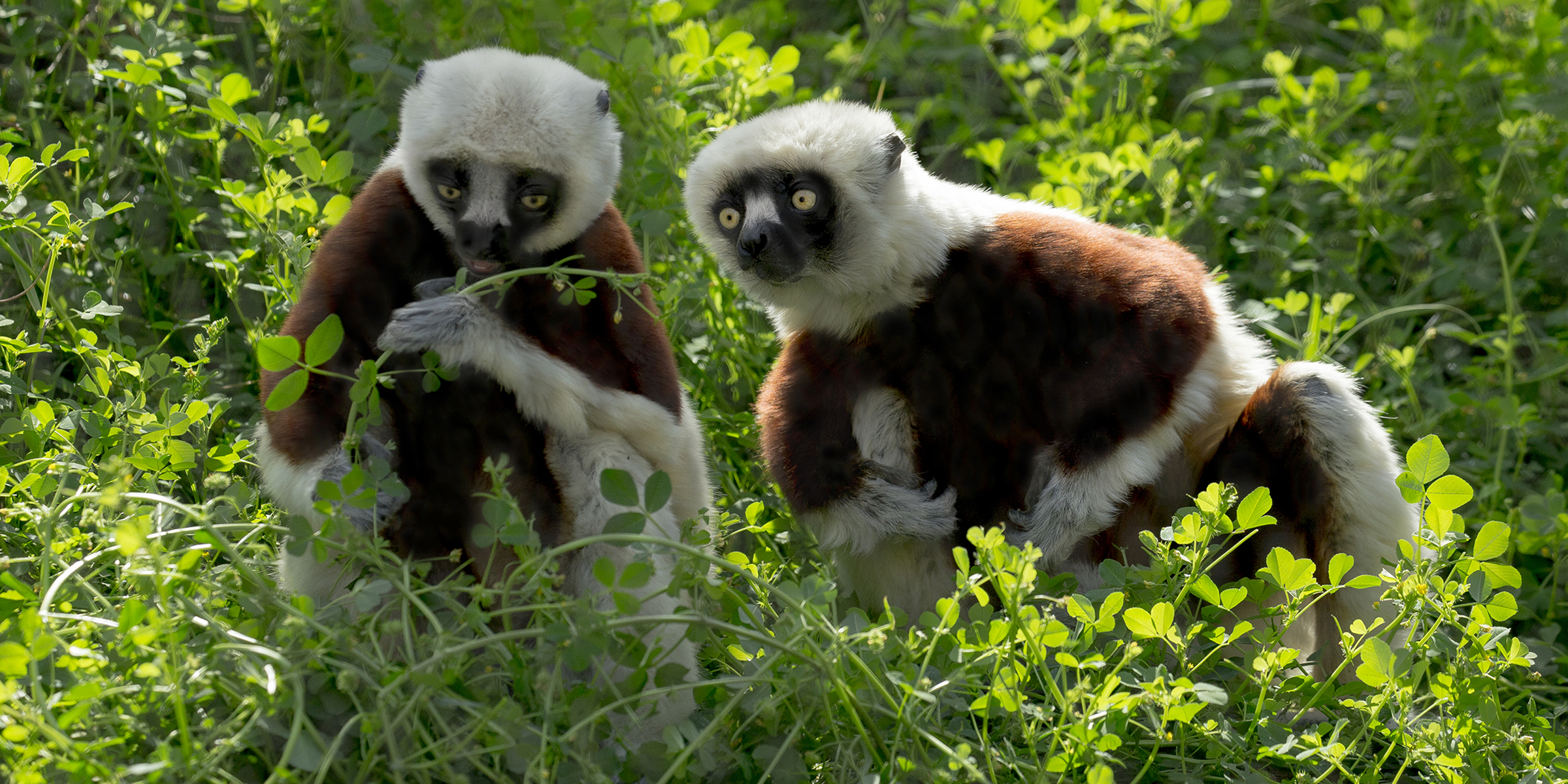
GETTING TO KNOW THE NEIGHBORS
Christian says that, with a bit of experience, visitors can tell the sifakas apart. Thrax—the male—has considerably more white on his face, between his nose and his forehead, and his upper canine teeth protrude just a little bit from the corners of his mouth. Christian says that Thrax is “very outgoing and friendly.” He describes female Agrippina, the larger and older of the two, as “more reserved and a bit more aloof.” That’s not uncommon, he says, because female sifakas tend to be more dominant than males.
One big day for Thrax and Agrippina was the first time they shared exhibit space with a pair of male blue-eyed black lemurs and a small group of ring-tailed lemurs. Such introductions are carefully planned. The animals see, hear, and smell each other in the lemur bedrooms first. “I don’t expect squabbles,” says Jill Andrews, animal care manager.

WHO’S WHO?
With a bit of experience, visitors can tell the difference between male sifaka Thrax (left) and female Agrippina (right). Look at the whitish patch over the nose—Thrax’s whitish patch extends to the white fur on his forehead. Sifakas typically live in small, social groups that sleep and forage together.
As the other lemurs strolled into the exhibit, all three species eyed each other warily and appeared to take stock of the situation. They were clearly all very much aware of their new exhibit mates, and for the first few minutes, the animals were circumspect. Then, either inadvertently or on purpose, one of the young blue-eyed black lemurs made a move that challenged Agrippina—visual communication such as body postures, gestures, and facial expressions are important to lemurs. The sifakas reacted, and a quick chase around the lush habitat ensued. Such behavior helps to establish social norms. Jill is pleased with how the lemurs are now responding to each other, saying that for the most part, “They are all being very calm.”
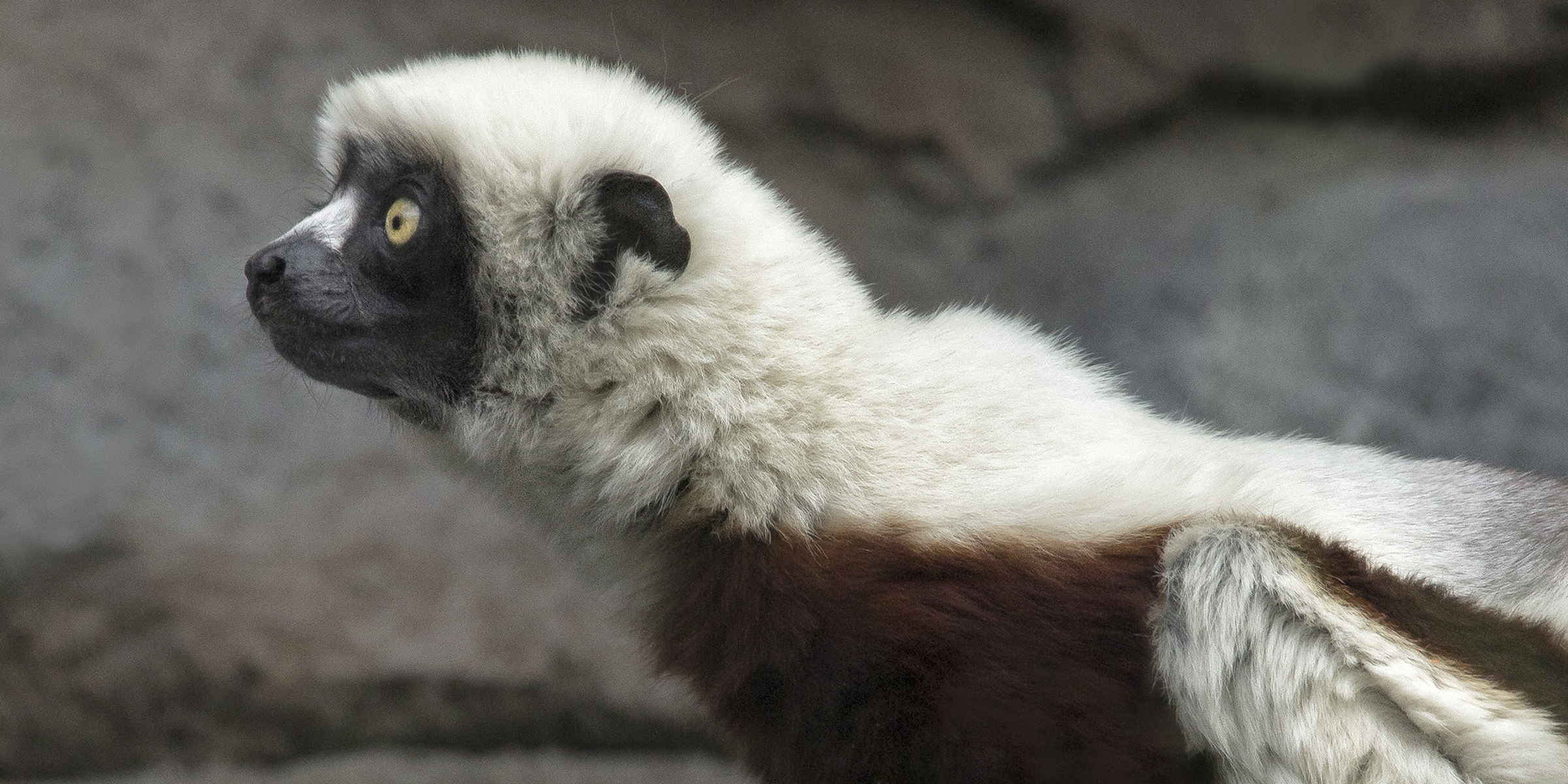
ENDING EXTINCTION
Christian wants people to know that not only are the sifakas engaging and adorable, they are also critically endangered. Restricted to a small area of northwestern Madagascar, they face habitat destruction and fragmentation—mostly as a result of charcoal production, slash-and-burn agriculture, and periodic burning to generate pasture for livestock.
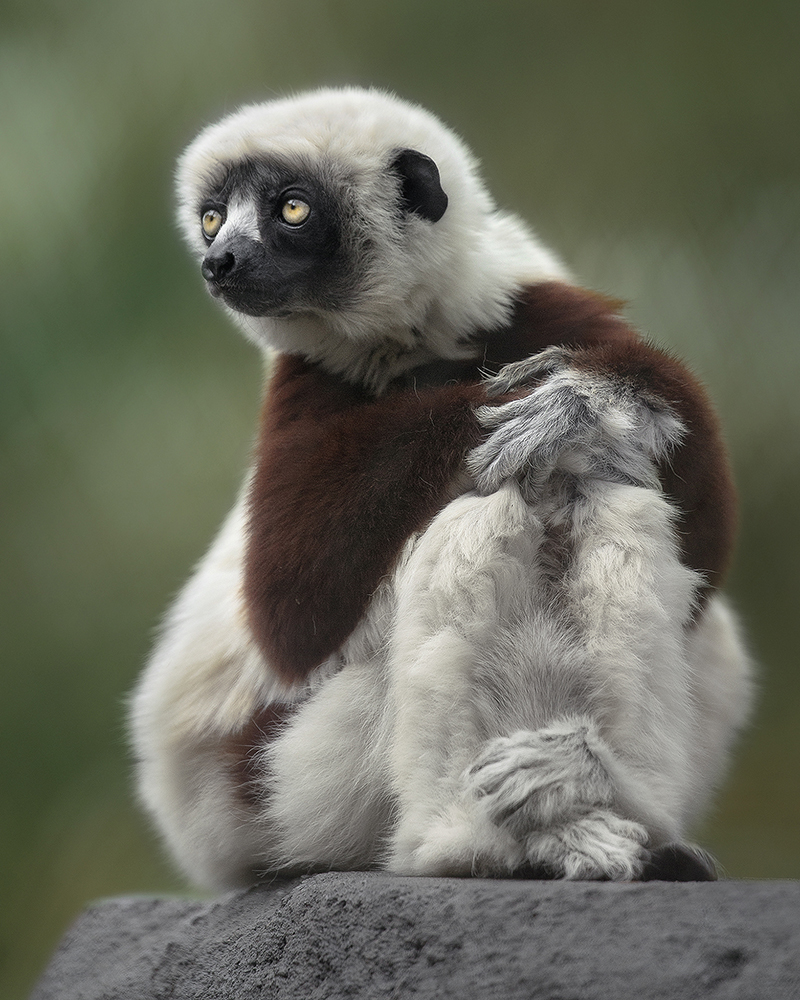
AFRICA ROCKS
Coquerel’s sifakas live on the island of Madagascar, in small forest pockets in northwestern parts of the country. Much of their habitat has been damaged and fragmented. You can visit our Coquerel’s sifakas at the Zoo’s Conrad Prebys Africa Rocks exhibit, along with blue-eyed black, red ruffed, red-collared, and ring-tailed lemurs.
In the fight against extinction, San Diego Zoo Global participates in the Association of Zoos and Aquariums’ Species Survival Plan (SSP) program for the Coquerel’s sifaka. The mission of the SSP is to cooperatively manage Coquerel’s sifaka populations within managed-care facilities. “Thrax and Agrippina are here as representatives of their species, so people will be encouraged to learn more about these sifakas, and to understand their position in the wild and what we are doing here,” says Christian. With luck, we will one day hear the pitter-patter of little clingers-and-leapers in Africa Rocks!

